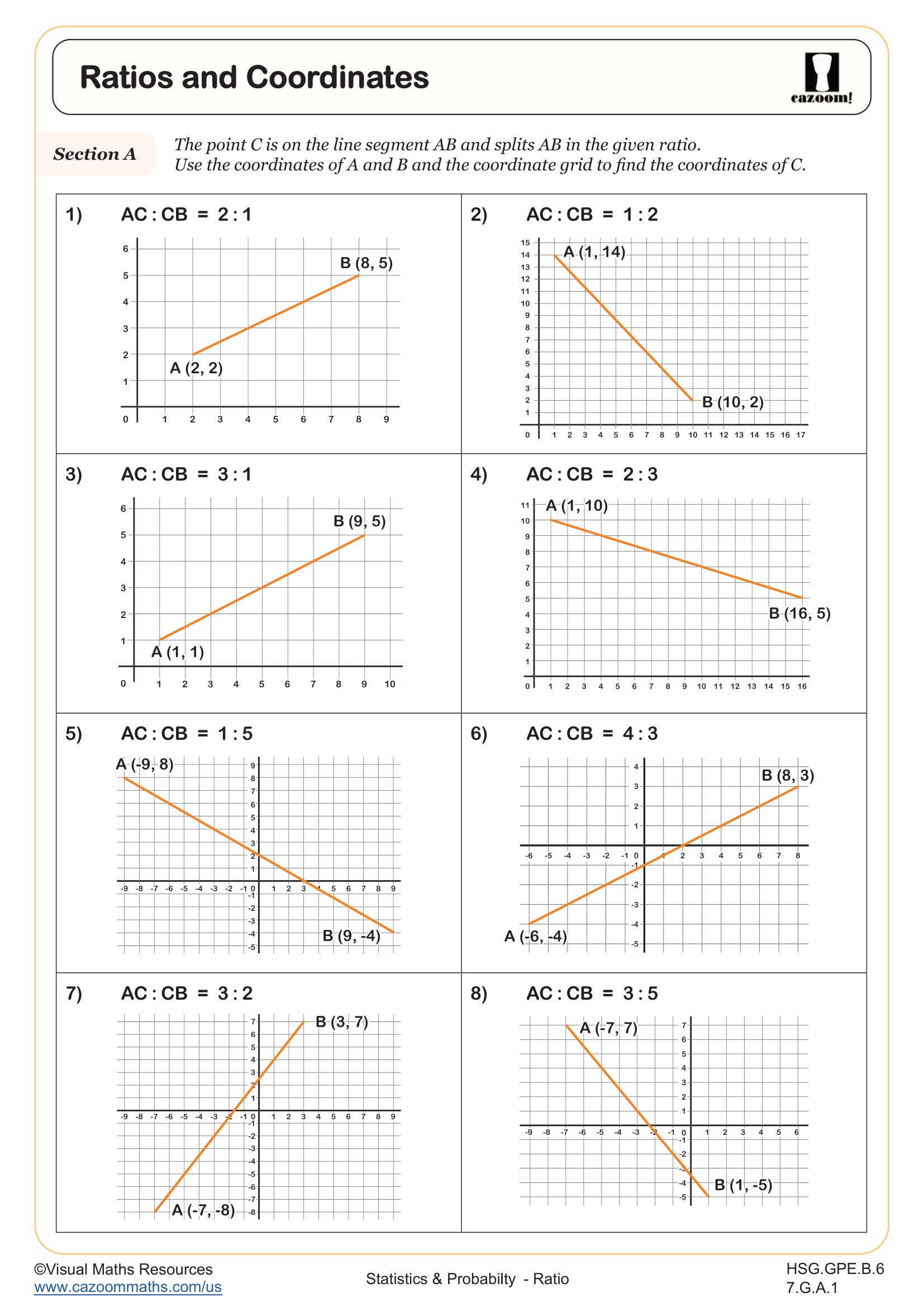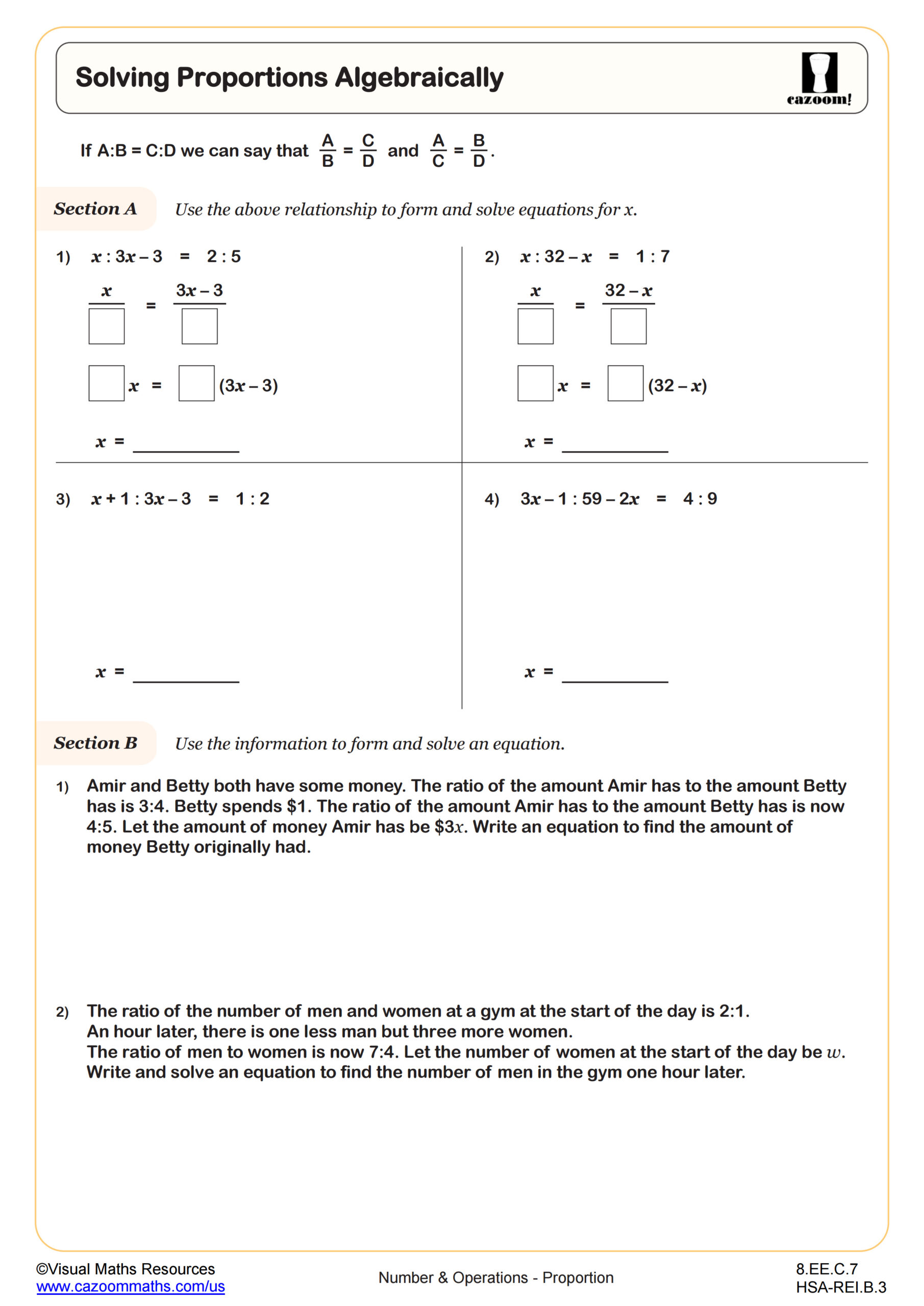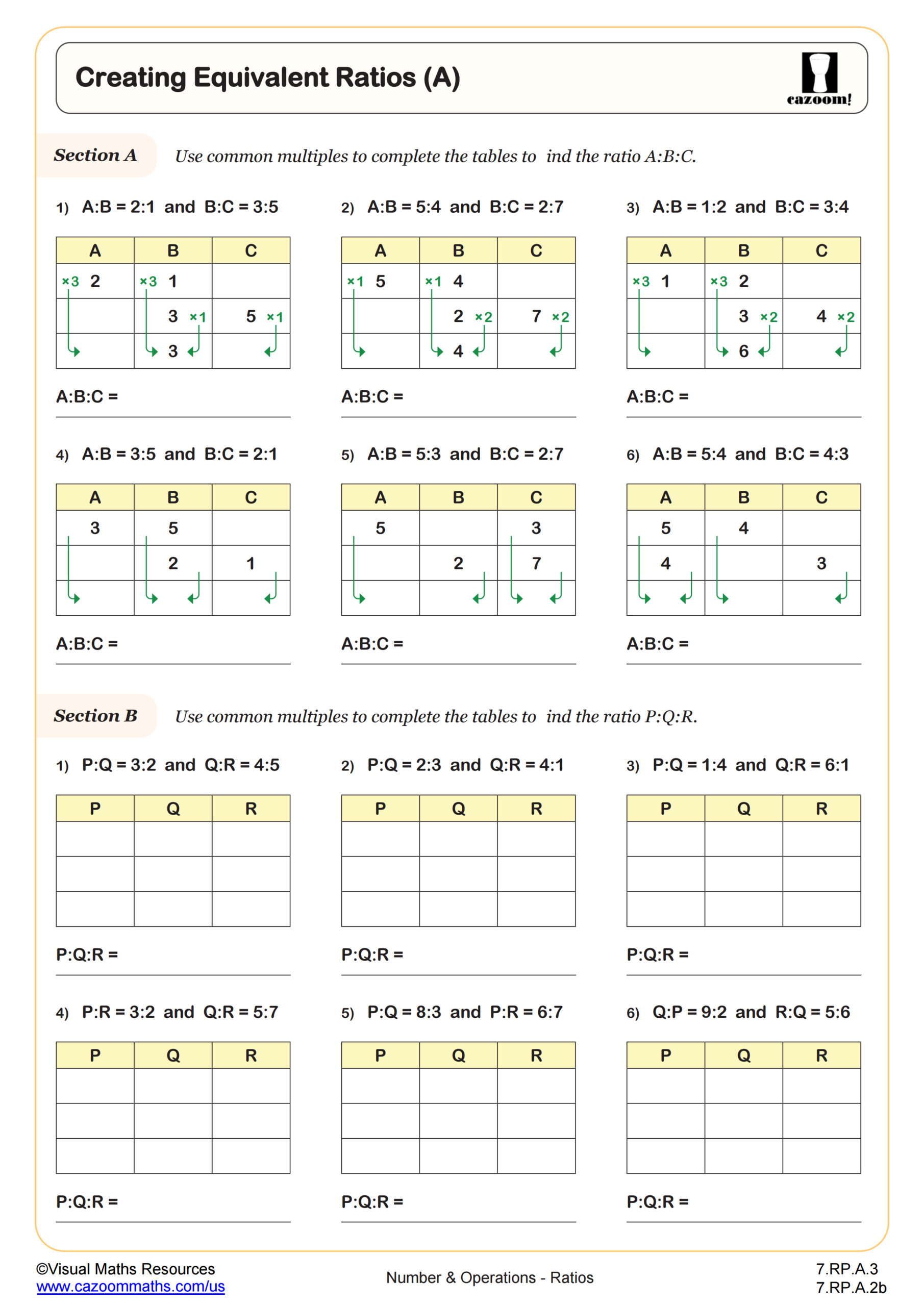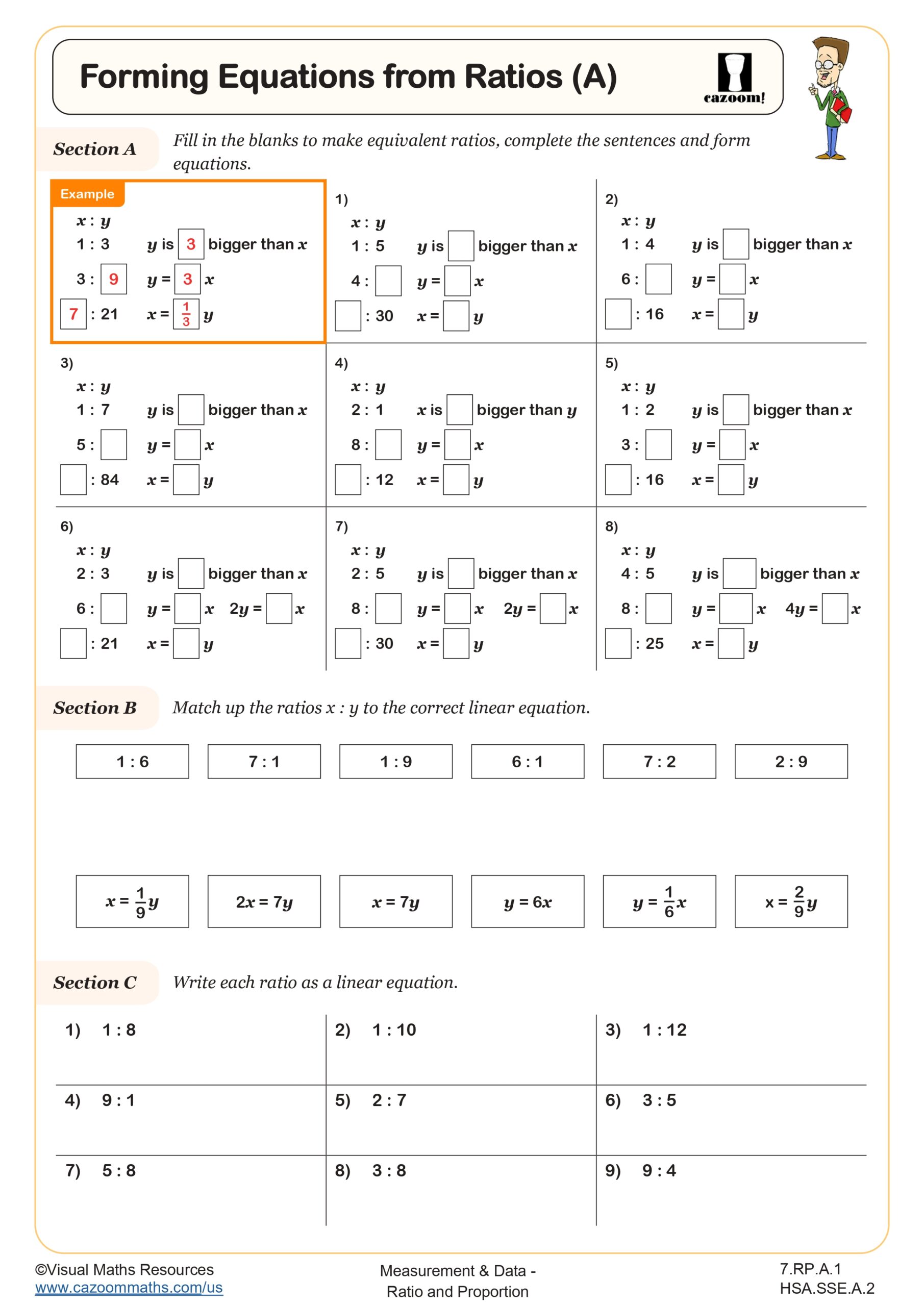Back to:
Changing Ratios WORKSHEET
Suitable for Grades: 7th Grade
CCSS: 7.RP.A.2
CCSS Description: Recognize and represent proportional relationships between quantities. a. Decide whether two quantities are in a proportional relationship, e.g., by testing for equivalent ratios in a table or graphing on a coordinate plane and observing whether the graph is a straight line through the origin. b. Identify the constant of proportionality (unit rate) in tables, graphs, equations, diagrams, and verbal descriptions of proportional relationships. c. Represent proportional relationships by equations. For example, if total cost t is proportional to the number n of items purchased at a constant price p, the relationship between the total cost and the number of items can be expressed as t = pn. d. Explain what a point (x, y) on the graph of a proportional relationship means in terms of the situation, with special attention to the points (0, 0) and (1, r) where r is the unit rate.
Changing Ratios WORKSHEET DESCRIPTION
In this worksheet, students will solve ratio problems involving changing ratios. Learners are provided with a two part ratio in the form A:B, told which part of the ratio has changed, by how much, and what the new ratio is after the change. They will then use this information alongside a scaling or an algebraic method in order to find the original and new values of A and B.
Students will demonstrate their ability to: manipulate ratios systematically, apply different problem-solving methods, and understand how changes in individual values affect the overall ratio.
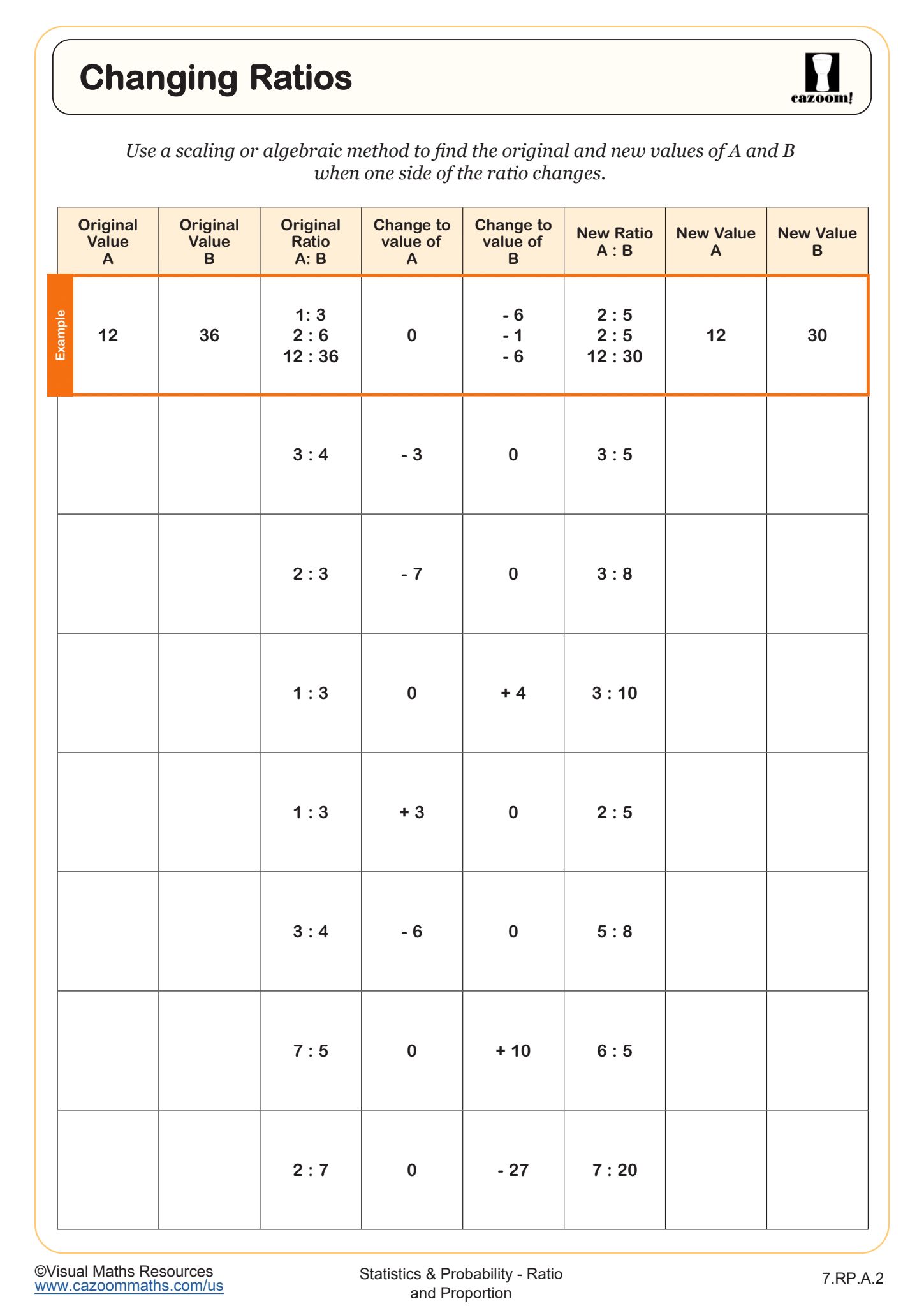
RELATED TO Changing Ratios WORKSHEET
Frequently Asked Questions
This changing ratios worksheet is designed for students in 7th Grade and aligns with Common Core State Standards.
